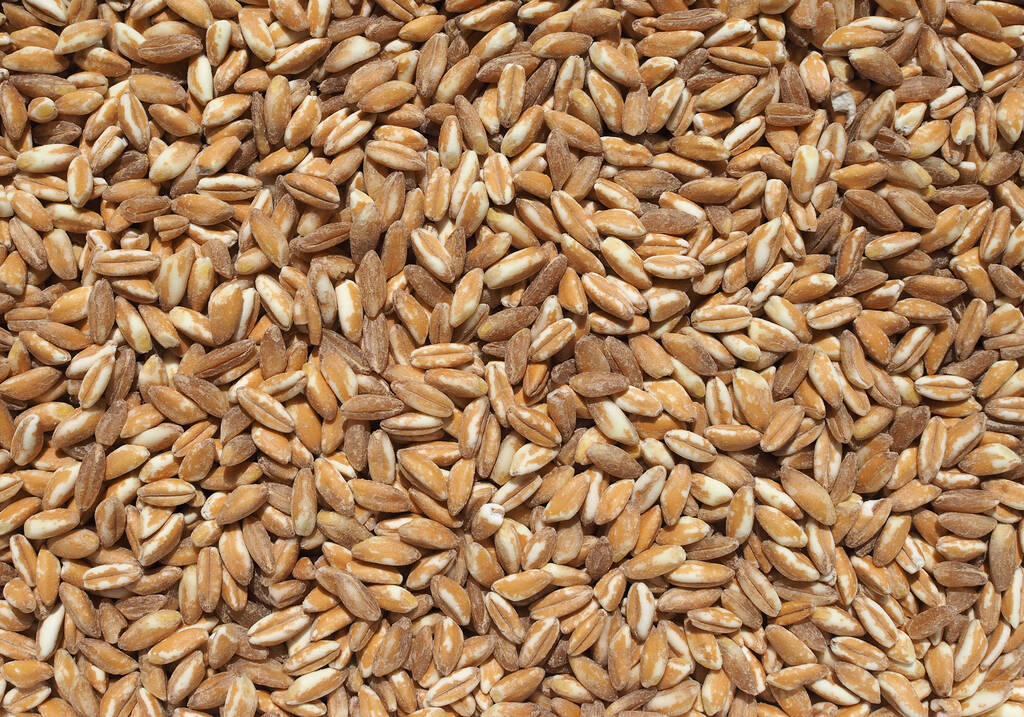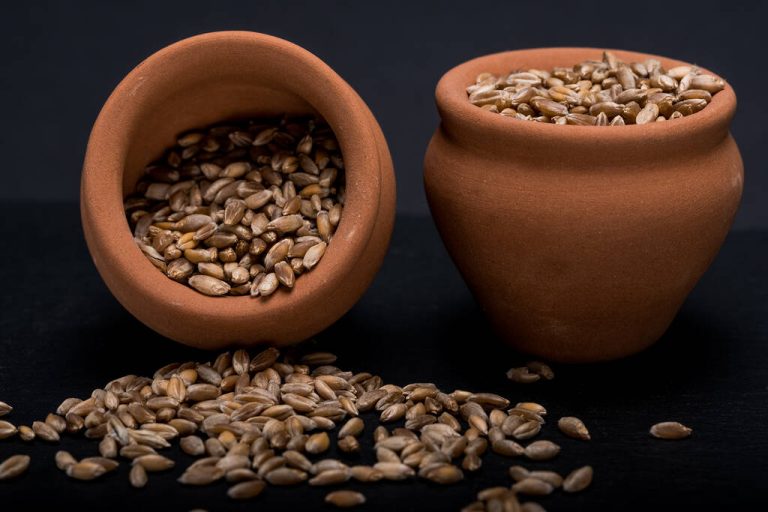Emmer is one of the oldest types of grain in the world. The ancestor of our modern wheat is rich in nutrients and tastes spicy and nutty. Here you can find out why you should try Emmer.

What is emmer?
Emmer (also Zweikorn) is one of the oldest cultivated cereals in the world, along with Einkorn. Almost 10,000 years ago, the ancient grain was cultivated in the region of the Fertile Crescent in the Middle East. The grain is an ancestor of today’s wheat.
Later, emmer also came to Europe: In Rome, Julius Caesar developed a taste for the grain – under him the ancient grain became one of the most important staple foods. As higher-yielding varieties became known, emmer was increasingly pushed out of European fields.
In contrast to einkorn, emmer grows two grains per spikelet – hence the name “two-grain”.
Emmer cultivation: entirely without sprays
Along with einkorn, spelled and kamut, emmer is one of the four ancient grain varieties. The healthy grain belongs to the “wheat” genus and is very similar to our current durum wheat. Both grow tall and develop very hard grains.
Emmer is mainly grown in organic farming, because: It doesn’t need any pesticides! The ancient grain is naturally resistant to pests, fungal attack and negative environmental influences. The reason for this is the husk: each grain of husked grain is surrounded by a solid shell that protects the grain in the field and makes it easier to store.
Unlike modern wheat, emmer also thrives in lean, nutrient-poor fields. As a result, its cultivation protects the soil and contributes to ecological diversity. Emmer is therefore extremely frugal to grow – according to the Initiative Urgetreide, however, the yield is significantly lower than that of modern wheat. While the highly cultivated wheat yields eight tons of grain per hectare, Emmer only has two to four tons. In addition, the husk has to be removed in an additional step before the grains can be processed further.
Black Emmer – A special variety
The slightly higher-yielding black emmer developed naturally from emmer. The grains have a black color that protects the grain from UV light. This makes black emmer one of the most resilient types of grain there is. In the course of climate change, however, the UV-resistant ancient grain could soon gain in importance.
Emmer: properties and use
Emmer is available as a whole grain, flakes, grist or as flour in the organic market or health food store. Emmer grains have a hearty and nutty taste. If you bake bread from them, it gets a dark color. In addition, beer is brewed from the Urkorn.
If you cook the whole grains, you can also use them as a side dish in soups, casseroles, or salads. The minestra di farro is traditionally cooked with emmer – this Tuscan soup used to be served mainly to soldiers.
In Germany, emmer is mainly used to make bread. However, pure emmer bread is hard to find, as the grain is less sticky than wheat. Therefore, flour mixtures are often used for the bread. Because it is very similar to durum wheat, emmer is also ideal for pasta. Due to the hard grain, the pasta remains al dente after cooking.
As the ancestor of wheat, emmer also contains gluten. Urkorn is therefore not an alternative for people who suffer from gluten intolerance. However, the gluten in Emmer is structured differently – people with a mild gluten intolerance can often eat it without any problems. Information about gluten-free flour can be found here.

What makes Emmer so healthy?
Emmer contains many valuable ingredients: Because of the many minerals it contains and the high protein content, the original grain is much healthier than white wheat flour. Here is a brief overview of the nutritional values per 100 g:
Calories: 325g
Carbohydrates: 62 g
Protein: 13 g
Fiber: 9 g
Fat: 2.7g
With around 13 g of protein per 100 g, emmer contains about twice as much protein as wheat. Your body not only needs this to build muscle, but it also keeps you full for a long time. Emmer also scores with a lot of zinc, iron and vitamin E. The carotenoids it contains preserve the eyesight. Overall, the nutrients in emmer are similar to those in spelled.

